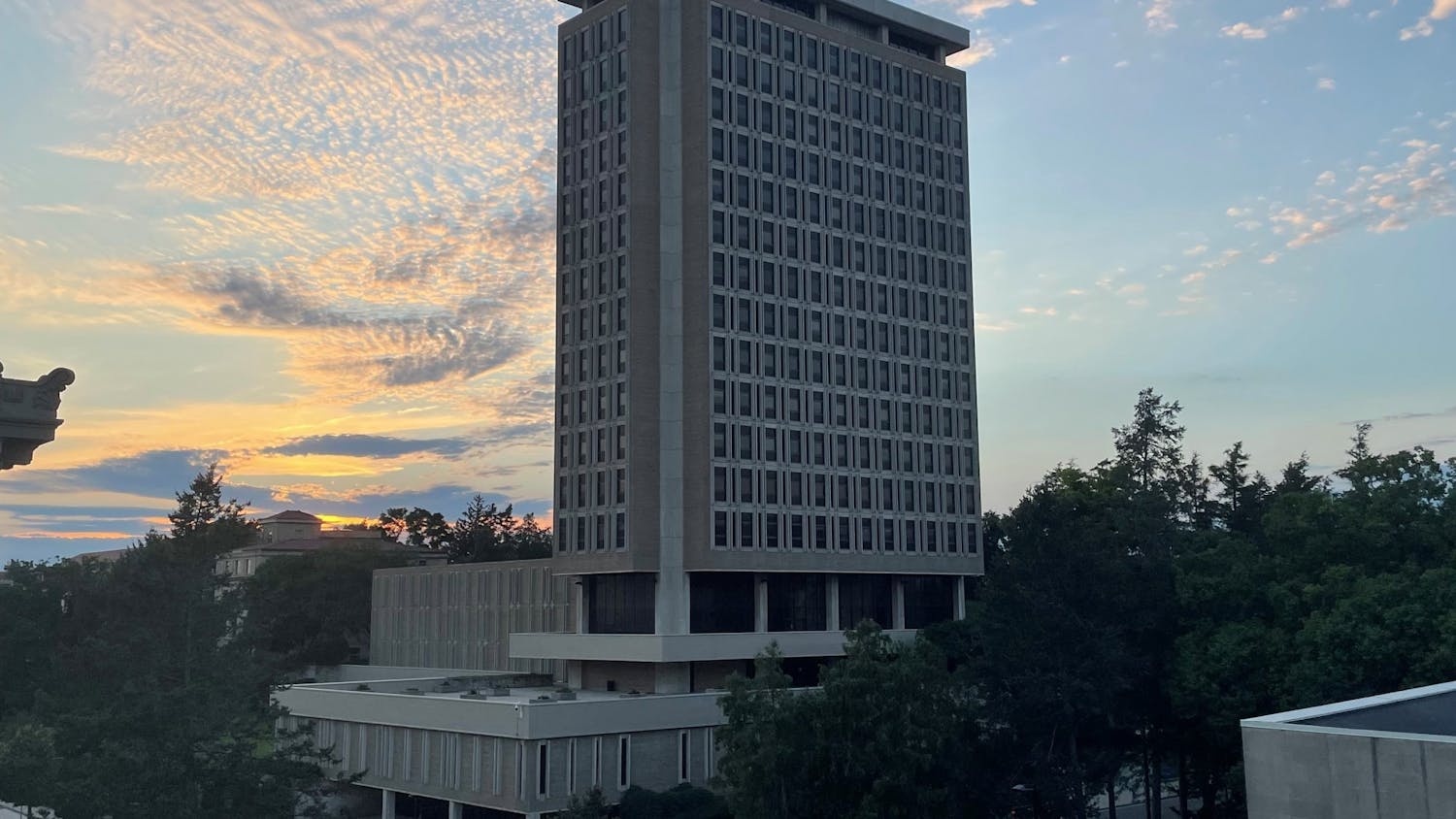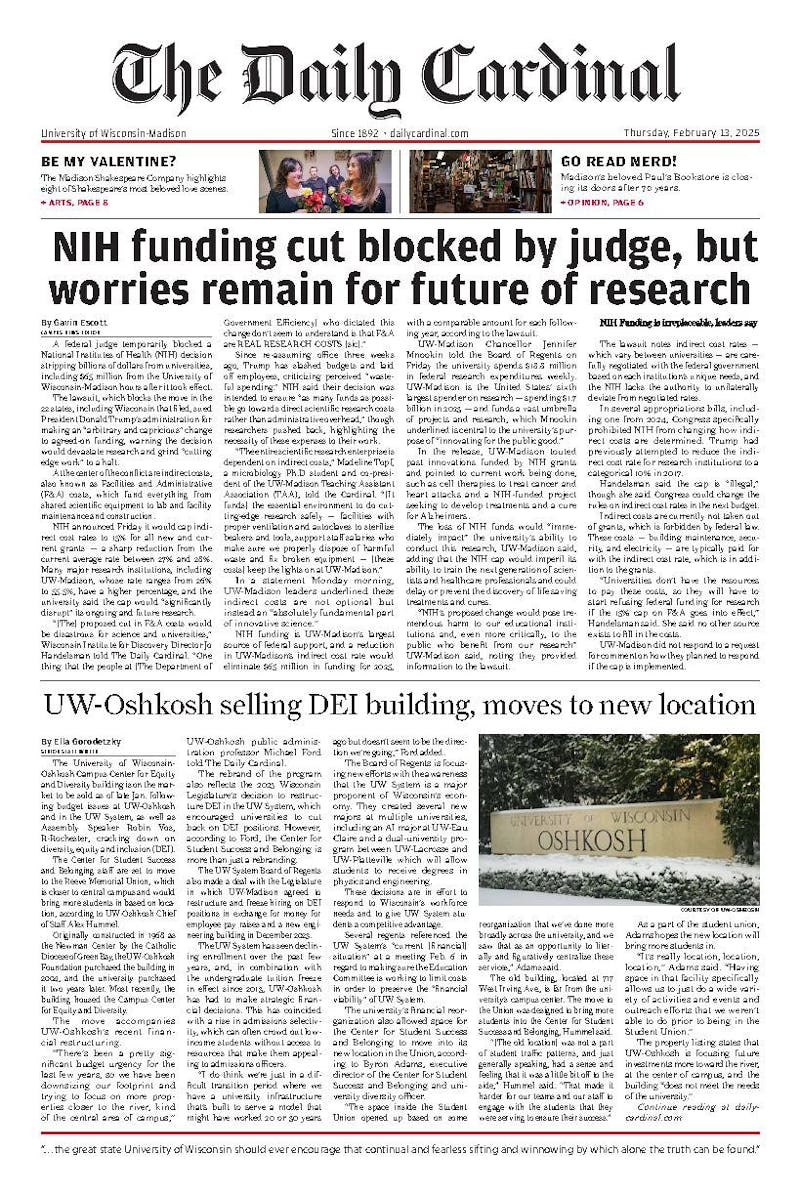While students at the University of Wisconsin-Madison are no strangers to cold winters, the start of the spring semester saw particularly harsh conditions.
The first day of class, Jan. 21, saw a low temperature of -13 degrees Fahrenheit with maximum wind speeds of 17 miles per hour. Students bundled up, braving a -30 degrees Fahrenheit wind chill to make it to classes and campus events.
The infamous polar vortex claims responsibility for the recent cold snap. The Arctic polar vortex is a stratospheric band of strong westerly winds located 10 miles and 30 miles above the North Pole. The vortex is a counter-clockwise flow that perpetually encloses a band of extremely cold air.
Portions of Northern Europe, North America and Asia feel the effects of the vortex when it is knocked off kilter. Whether the vortex slows, wobbles or splits due to stratospheric upheaval, the associated polar jet stream will often develop a wavy shape with troughs and ridges. Polar air fills low-pressure troughs, bringing icy conditions.
Climate change and extreme cold
While it may seem counterintuitive, scientific research suggests climate change can make these cold snaps more intense. There is no evidence that extreme cold is becoming more frequent or intense, but a rise in Arctic temperatures is weakening weather systems that typically keep cold air trapped around the poles.
Preliminary research published through UW-Madison’s Community Economic Development Division indicates that changing weather patterns may increase extreme cold weather events, like the polar vortex. Swings in temperature can harm important crops like alfalfa, which supports Wisconsin's dairy industry, or push some species to the edges of survival.
In a joint study with the Cornell Lab of Ornithology, UW-Madison professor Ben Zuckerberg and former UW-Madison postdoctoral researcher Jeremy Cohen found that bird abundance during a 2014 polar vortex decreased for five to 10 days afterwards.
“The data suggests that some birds may have abandoned the area, moved south, and came back. Alternatively, some birds could have laid low because of the stress caused by the cold,” Cohen said.
Cold days ahead for winter traditions
Madison residents were surprised with a brief warm spell, with temperatures reaching 49 degrees Fahrenheit on Friday. Changes in atmospheric pressure allow for a brief push of milder air from the south, causing a temporary (and welcome) shift to warmer temperatures. But don’t worry, temperatures are expected to plunge yet again — just in time for some of Madison’s anticipated winter activities.
Traditions like a series of Winter Carnival activities from Feb. 6 to Feb. 9 and the Lily's Classic hockey tournament on Feb. 15 — which depend on cold weather — are expected to proceed as planned. Students, keep your long coats and gloves ready — the vortex isn’t done with you yet.






